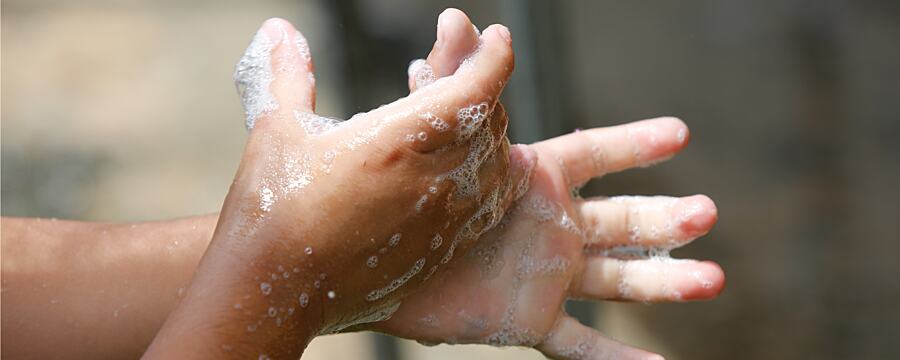Child Protection During COVID-19
Data shows that violence against children in the home increased in the context of the COVID-19 outbreak and other infectious disease outbreaks.
For example, in a survey from World Vision, 81% of children and young people talked about violence in their homes, communities and online since the start of the COVID-19 pandemic.
COVID-19 Child Protection Risk Factors
Risk factors for violence, abuse and neglect rise for children under containment. At the same time, some COVID-19 prevention measures disrupt the formal and informal protective systems that generally identify and respond to children’s risks and cut children off from positive and supportive relationships they rely on when in distress, including at school, in the extended family and in the community.
Children’s rights to safety and protection, as outlined in the Convention on the Rights of the Child and the Minimum Standards for Child Protection in Humanitarian Action, are threatened as a result of stressors related to COVID-19.
Child Protection is a Coordinated Operation
Protecting children from violence, abuse and neglect in the home during COVID-19 and other infectious disease outbreaks requires all sectors to undertake coordinated measures. Possible actions and adaptations to the usual child protection approaches and services are outlined below:
Prevention
Influence social norms and related behaviors to better safeguard children at home.
- Identify positive and negative coping mechanisms or behaviors that are strengthened and exacerbated by the pandemic (e.g., alcohol use).
- Develop culturally and age-appropriate messaging to reinforce positive behaviors and discourage negative ones.
- Disseminate messages through contextually appropriate, low- and high-tech media, including internet, text messaging, local radio stations, loudspeakers and other solutions.
- Work with community and religious leaders to raise awareness and influence positive behavior.
- Include information on the protection of children from violence, abuse and neglect during COVID-19 and other IDOs; in public health messaging, educational platforms and existing programs.
Positive Parenting Resources
- Provide parents and caregivers, including those who are hard to reach, with a variety of accessible resources that support positive parenting, non-violent discipline and positive coping and stress management skills.
Strengthen the role of schools and education actors to support children in distress.
- Help children to re-establish a sense of educational routine through remote schooling and by working with public and private entities to provide children with access to educators, educational materials and, where possible, distance and virtual learning options (e.g., radio programs, internet access, laptops/tablets).
- Provide children with continued access to school-based counseling through telephone or online support where face-to-face contact is not possible, while enabling counselors or other relevant school staff to continue to monitor the well-being of children in at-risk families.
- Work with at-risk children to develop personal safety plans.
Identification and Reporting
Strengthen and adapt child helplines.
- Provide additional resources to adapt and strengthen child helplines to operate in the context of the IDO, including enhanced capacity with child-friendly IDO counselor training and adapted and relevant referral strategies.
Raise the awareness of a range of professionals on their roles in identifying and reporting signs of abuse or neglect.
- Alert professionals who may have contact with children despite social distancing measures (e.g., pharmacists, medical personnel, school staff, police, first responders) on their roles in identifying and reporting signs of violence, abuse and neglect.
Child and Family Welfare Services
Support families in distress.
- Provide emergency cash assistance to vulnerable families to mitigate disruptions due to IDO-related livelihood shocks.
- Strengthen the capacities of the social service workforce to support children and families facing challenges — such as a caregiver’s mental illness, disability, drug dependency and/or domestic violence — that may have increased due to the pandemic.
Designate and support child protection as an essential service.
- Support child protection authorities to meet their statutory duties throughout the IDO response.
- Support para-social workers and other community-level child protection workers to deliver child protection services in fragile settings where child protection authorities are not present.
- Support para-social workers and other community-level child protection workers in delivering child protection services in fragile settings where child protection authorities are not present.
- Empower social service providers to effectively assess the risk of face-to-face versus telephone/online support (for both pre-existing and new cases) with due consideration for the safety of children at risk of violence and to conduct home visits when necessary.
- In situations where social service workers have face-to-face interactions with sick individuals or their direct contacts, provide the appropriate personal protective equipment as per WHO guidance or national mandates.
Specialised services for children and families.
- Adapt and continue the delivery of services that mitigate risk factors for violence, abuse and neglect (e.g., caregivers’ mental health, substance misuse, domestic violence).
- Adapt and continue key child protection interventions in pre-existing humanitarian settings that support children, families and communities and promote family unity.
- Scale up the capacity of the family-based alternative care system to prevent unnecessary recourse to residential care during the pandemic.
- Provide virtual specialized mental health services and psychosocial support to children who are experiencing trauma when public health measures preclude face-to-face contact.
Your Task
- What do you feel are the most critical recommendations for reducing violence, abuse and neglect of children in the home during COVID-19 or other IDOs in your context?
Please make a record of your recommendations and reasons for selecting them.
Share this
Protecting Children during Infectious Disease Outbreaks

Protecting Children during Infectious Disease Outbreaks


Reach your personal and professional goals
Unlock access to hundreds of expert online courses and degrees from top universities and educators to gain accredited qualifications and professional CV-building certificates.
Join over 18 million learners to launch, switch or build upon your career, all at your own pace, across a wide range of topic areas.
Register to receive updates
-
Create an account to receive our newsletter, course recommendations and promotions.
Register for free







